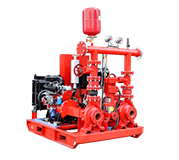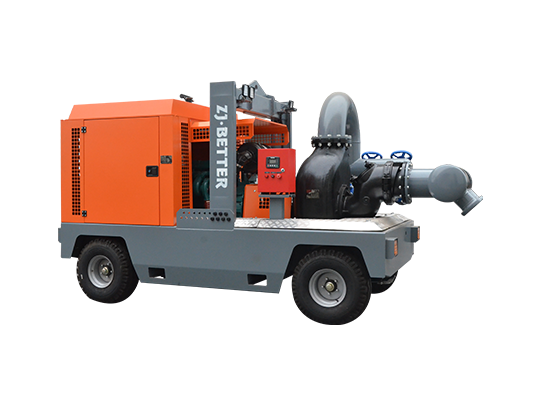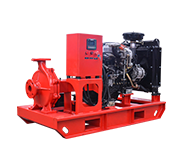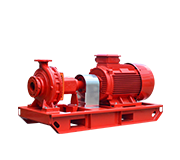If you want your equipment to operate efficiently and save energy, everyone knows that the design and quality of the product itself are very important, but in fact there is another important factor that is often overlooked, where is the most suitable place to install the diesel engine. If the installation is not done properly, there will be very troublesome problems when the equipment is running, such as large vibration, loud noise, high energy consumption and so on.
Diesel engine fire pumps are suitable for unattended emergency water supply and fire protection systems, with high degree of automation, superior performance, and complete protection functions. net pressure. Therefore, many customers follow the principle of "one standby and one use" when purchasing fire pumps, mainly electric fire pumps and diesel engine fire pumps as a supplement. How to install a diesel engine fire pump is better?

Generally speaking, we recommend that where natural ventilation is used to install diesel engine fire pumps, there must be vents and exhaust ports of sufficient size, and the position of the vents ensures that there is enough fresh air to supply the diesel engine for combustion within the temperature limit. Of course, the water supply radiator can also be used to take away the heat of the circulating cooling water and the heat emitted from the surface of the unit. If the space cannot meet the requirements of natural ventilation and cannot effectively dissipate heat, it is recommended that you adopt forced ventilation, install an intake fan and an exhaust fan at the vent, and choose a location that can provide enough cold air for the diesel engine and take away the machine room hot air inside. Generally speaking, the air intake of the unit should be 6-7 times that of the diesel engine. Only in this way can normal ventilation be ensured and the operating efficiency of the equipment can be improved.
In addition, it must be fixed firmly so that the entire unit can be supported to ensure that the unit is in a horizontal state and absorb vibration. Generally speaking, the foundation of the unit adopts a concrete structure. The length and width are 150-250mm on one side of the length and width of the unit chassis, and the depth is 300-600mm. The height of the anchor bolts should be about twice the bolt diameter. And there should be a 750mm channel on both sides and front of the unit to facilitate the operator's inspection and general maintenance.







